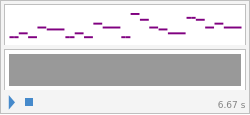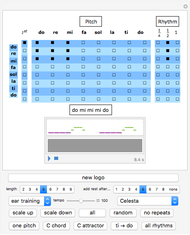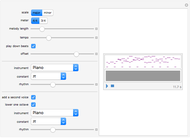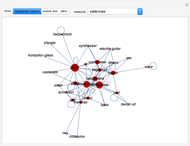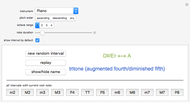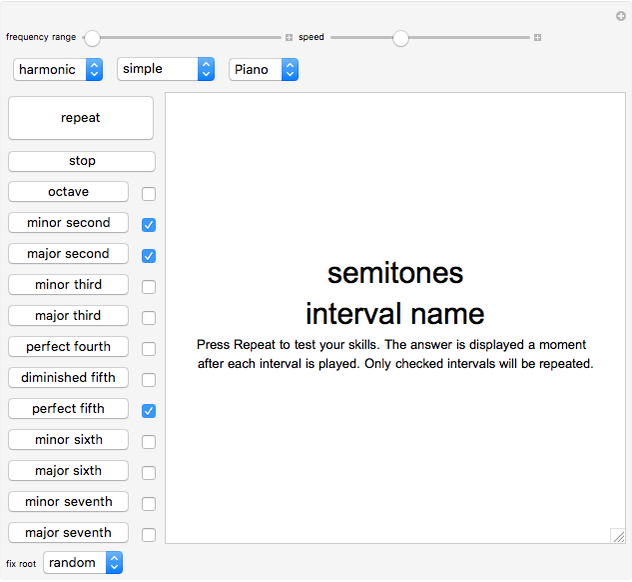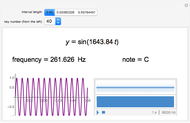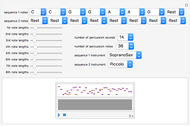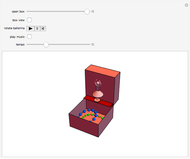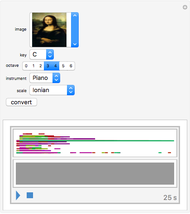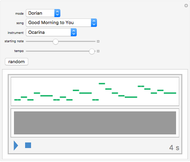Musical Variables: Modes and Instruments

Requires a Wolfram Notebook System
Interact on desktop, mobile and cloud with the free Wolfram Player or other Wolfram Language products.
Changing the mode or instrument for a tune can affect how it is perceived. This Demonstration offers seven different modes, several instruments, different starting notes, and varying tempos. Additionally, there is a "random" button that randomly selects different options for each variable when clicked, so that you can easily create new listening experiences with the click of a button.
Contributed by: Berwin Xie and Kevin Krout (June 2013)
Based on a program by: John Kiehl
Special thanks to: the University of Illinois NetMath Program and the Mathematics Department at William Fremd High School
Open content licensed under CC BY-NC-SA
Snapshots
Details
Modes in music are determined by the semitones (the distance between notes) of the music. If you imagine a piano keyboard, every key is a semitone different from the ones next to it. The Ionian mode, or major mode, is the basic and most common mode. It has an interval sequence of 2-2-1-2-2-2-1, where the numbers are the number of semitones between consecutive notes in the scale of the piece. Deviating from the more consonant Ionian mode by changing the relations between the scale notes makes pieces sound very different; for example, "Good Morning to You" sounds much darker when it is in the Locrian mode.
Permanent Citation
"Musical Variables: Modes and Instruments"
http://demonstrations.wolfram.com/MusicalVariablesModesAndInstruments/
Wolfram Demonstrations Project
Published: June 7 2013
